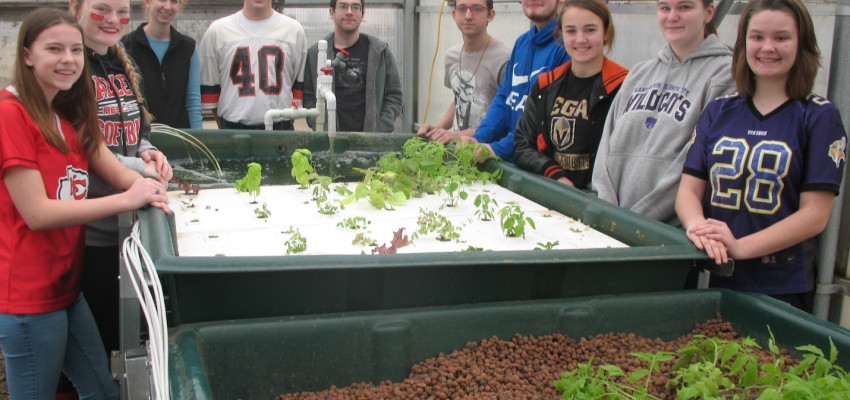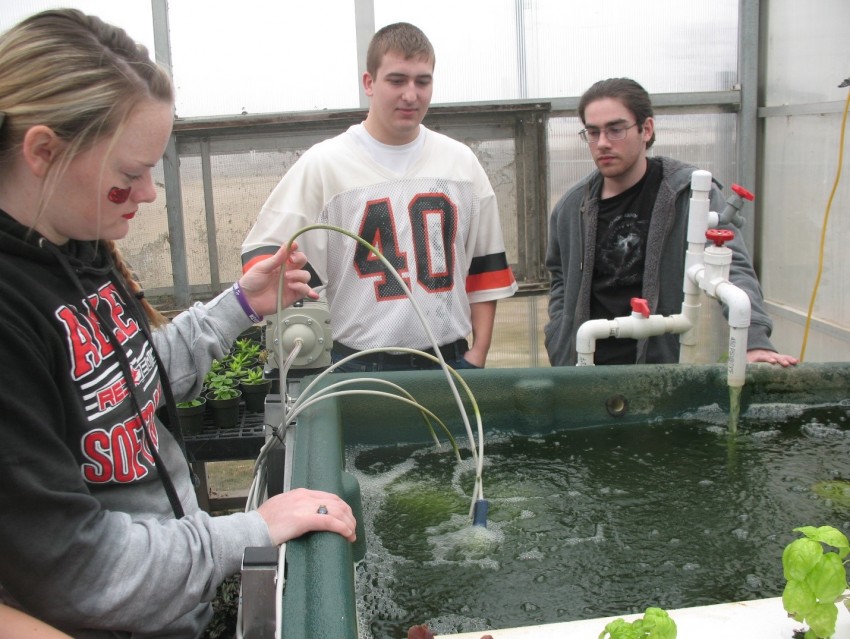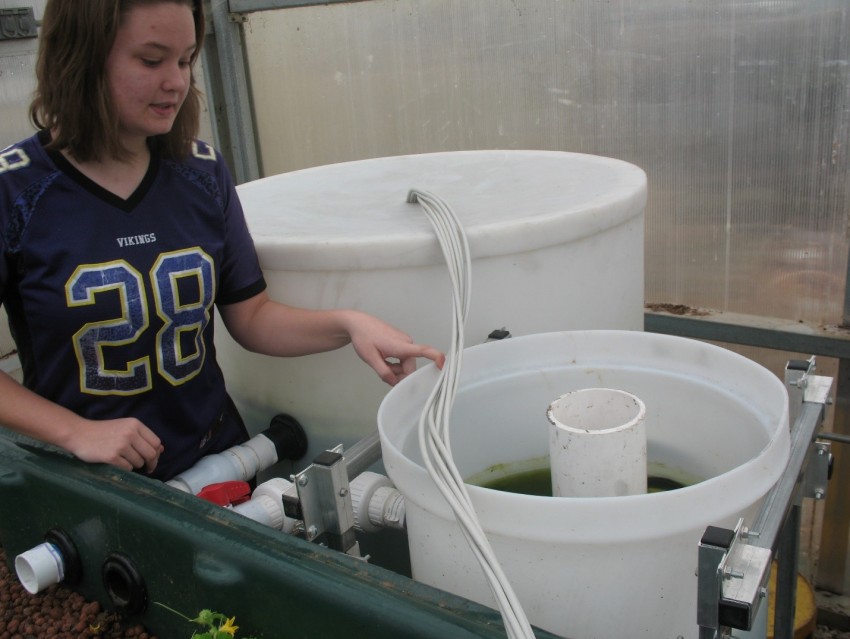By Debbie Bearden on February 20, 2019
Aquaponics at Marmaton Valley High School

It’s a freezing, drizzly day in Moran, where nearly a dozen high school students have installed a 650-gallon aquaponics system inside their greenhouse.
The idea stemmed from an FFA speech given by Katelynn Morgan a year ago for competition. In the process of doing research and putting her speech together, Katelynn caught the bug for aquaponics. She shared her desire with her agriculture teacher, Jacque Gabbert at Marmaton Valley High School (MVHS). Gabbert encouraged Katelynn to learn as much as she could and to share it with her classmates. Gabbert also requested a grant from Kansas Department of Education to use unspent Perkins funds to purchase and maintain the system.
The project involved the ag mechanics class that built the frames for the tanks to sit on in the greenhouse. The animal science class researched the type of fish to buy, how many and how to take care of the fish in an aquaponics system. The horticulture class put the aquaponics system together and will maintain and care for it.
“The best part of being involved in our project with the aquaponics unit is learning hands on about alternative and more environmentally friendly ways to grow crops and fish,” Hannah Dahl says.
The aquaponics system starts with the water being pumped up by a sump pump into the float bed where bubbling stones oxygenate the water below the Styrofoam sheets with holes filled with rockwool holding the plants in place. The water then goes to the fish tank where the 50 tilapias reside, then into the clarifier where it’s cleaned before going into the media bed filled with clay pebbles. From there, the water is siphoned back to the sump pump tank, completing the system.
“It allows us to experiment with different methods of raising plants and helps us get a better understanding of what’s needed to grow and maintain a healthy plant,” Ty Scharff says.
The students have learned a great deal about problem solving, gardening, water dechlorination and water oxygenation.
“The best part of this project is being part of a group to problem solve, and in the end seeing the successful finished product,” Karlie Stephens says.
“I would say the best part is working out all of the kinks the system has,” Colton Sneed says.
Katelynn Morgan says, “I think aquaponics has taught us all to have patience with the system. The plants will grow, it just takes time. I love growing things, so finding new ways to grow things is amazing.”
Students have learned the fish smell, not all plants will grow in this type of system, it is good for urban farming and it’s labor intensive.
The students’ daily chore is to feed the fish. On a weekly basis, they check the levels of the pH, nitrates, nitrites, ammonia, eC and dissolved oxygen.
Allison Heim says, “the best part about having an aquaponics system is learning how the aquaponics system works and how this can impact the future of agriculture.”
The students plan to use the yield from the system to supplement the school lunch salad bar with lettuce, tomatoes, cucumbers, squash, green beans, peppers, basil and cilantro. When the fish reach harvest size, the students intend to donate them to the MVHS chapter of Skills USA for their fish fry at the school.
The system works well with the greenhouse currently used for experiments and growing plants for their annual spring sale. It adds to the ecosystem and teaches students to manage multiple systems.
At the end of the spring semester, a schedule will be put in place for the students to maintain the aquaponics through the summer. Next year, the students should get through an entire cycle.
“My goal is that at least one of these students will turn this into a Supervised Agriculture Experience (SAE),” Gabbert says. “In agriculture education we pride ourselves on learning by doing. This is a wonderful example of that.”
According to Braden Allison, “The best part about the aquaponics system is the outstanding impact it can have on a single person, let alone a whole group. With it, one can compare the effects a project like this can have. The negative effects allow for improvement, not only for an aquaponics unit, but also as a person.”




